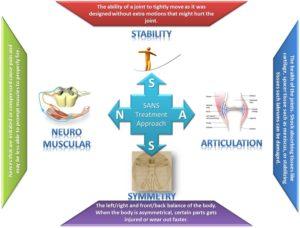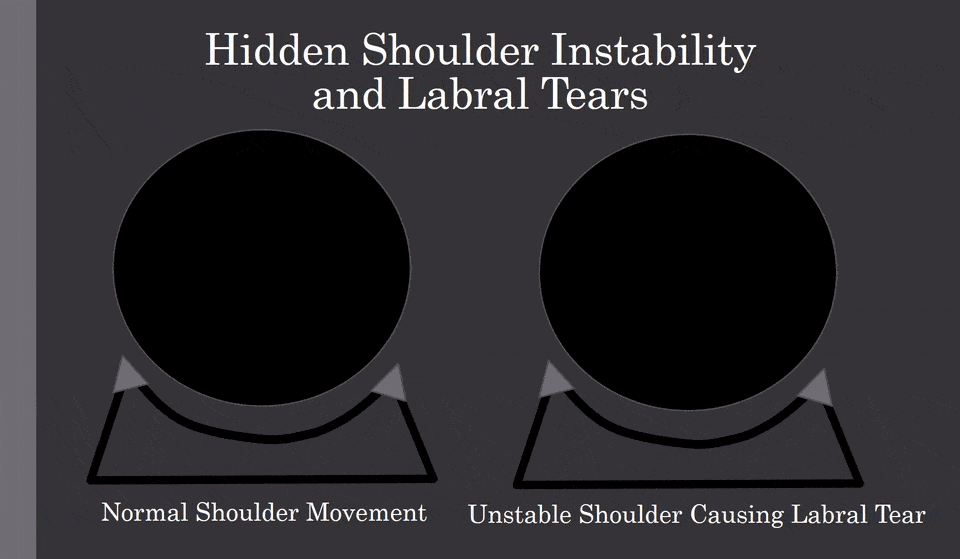The pain started as a small ache and now has progressed. You don’t recall any specific injury. Conservative care including rest, ice and heat have failed to provide any significant or sustained relief. Your doctor is concerned about shoulder arthritis. What is shoulder arthritis? What are the basic parts of the shoulder joint? What are the different types of shoulder arthritis? What are the most common symptoms of arthritis in the shoulder? What are the risk factors for shoulder arthritis? What are common treatment options for shoulder arthritis? When should you contact your doctor? How is shoulder arthritis diagnosed? What regenerative treatment options exist for shoulder arthritis? Let’s dig in.
Shoulder Arthritis
The shoulder is a truly remarkable joint. It allows you to reach out into virtually all directions: overhead, forward, and backwards. The shoulder joint allows us to reach overhead with heavy weight, grab the water out of the refrigerator, snake our belts through the pant loops, tuck our shirts in and perform pushups or burpees on demand. It is the unique structure of the shoulder joint that allows these motions. Unfortunately, like other joints in the body the shoulder is susceptible to irritation and injury. Osteoarthritis is the most common cause of disability in the United States, affecting up to 32.8% of patients over sixty years of age (1). Shoulder arthritis is a common condition estimated to be as high as 16-20% in the middle aged and elderly population (2). Shoulder arthritis can compromise range of motion, strength and be a source of debilitating pain. This blog will review the shoulder.
Shoulder Anatomy Basics
The shoulder is composed of the following:
Ball-Socket Joint: The head of the long bone of the arm (humerus) fits into a boney socket called the glenoid. It is a shallow joint which allows for the tremendous range of motion.
Secondary Smaller Joint: The collar bone joins the acromion to form the acromioclavicular joint (AC Joint). This is much smaller joint than the ball-socket joint discussed above. It is essential for scapular range of motion and function.
Ligaments: Ligaments are thick bands of connective tissue that connect bone to bone. The major shoulder ligaments are the superior, middle and inferior glenohumeral ligament and the coracohumeral ligament.
Tendons: Tendons are thick bands of connective tissue that connect muscle to bone. The rotator cuff is compromised of 4 tendons and is critical to the stability and the function of the shoulder.
Arthritis can cause injury to the ball socket or AC joint leading to joint damage, cartilage injury, restriction in range of motion and pain.
What Is Arthritis In The Shoulder?
Not all arthritis is the same. There are many different forms of arthritis. The most common include:
Rheumatoid Arthritis
Rheumatoid arthritis is an autoimmune disease. This means that immune system attacks its own healthy cells including the shoulder joint. It can also affect other tissues in the body causing problems in the lungs, heart and eyes. The most common symptoms are pain, swelling, tenderness and restriction in range of motion.
Osteoarthritis
Osteoarthritis is the most common form of arthritis. It is commonly referred to as “wear and tear” arthritis. Cartilage is thin, very strong connective tissue that covers the bones in a given joint. Cartilage allows for smooth, pain free motion of a joint. Osteoarthritis involves the breakdown of the cartilage resulting in pain, swelling and restriction in range of motion. Shoulder arthritis has been demonstrated to affect up to 32.8% of the patients over the age of sixty (3). The prevalence of shoulder osteoarthritis increases with age and women appear to be more susceptible than men.
Post-Traumatic Arthritis
Post-traumatic arthritis develops after an traumatic injury to the joint. As opposed to osteoarthritis which develops slowly over time, post traumatic osteoarthritis can develop months to years after the injury. It causes approximately 12% of all osteoarthritis cases and mainly affects younger adults (4).
Avascular Necrosis
Avascular necrosis also known as osteonecrosis is a severe medical condition in which the bone tissue dies. That is right, the bone dies. That was originally thought to be due to a lack of blood supply but other important factors are what contribute to this condition. It is most common in the hip but is also present in the shoulder joint. Risk factors for avascular necrosis include trauma, steroid use and excessive alcohol use.
Rotator Cuff Arthropathy
Rotator cuff arthropathy is a specific type of shoulder degeneration that develops over time after the rotator cuff is damaged. Arthropathy is a term that refers to any diseased condition in the joints. It can involve peripheral joints such as the shoulder as well the facet joints in the spine. Rotator cuff arthropathy affects females more than males and is common in the later decades of life. It is classified according to the severity of the damage ( Type 1 A-Type IIIB). The most common symptom is pain, restriction in range of motion and weakness. Diagnosis is made by physical examination and plain x-ray. The latter is significant for narrowing of the shoulder joint space and upward movement of the arm bone (humerus) in relation to the socket (glenoid)
Symptoms of Arthritis In the Shoulder
Shoulder arthritis typically is gradual in onset. Symptoms can vary from patient to patient depending upon the severity of the arthritis and other co-existing conditions. The most common symptoms of shoulder arthritis include:
Pain in The Shoulder Joint
- Pain is the major sign of arthritis. It can be intermittent or constant.
- Typically deep in the joint
- Pain can also be located on the top of the shoulder in cases of AC joint arthritis.
- Night pain is common
- Pain may be aggravated by lifting, carrying heavy objects, overhead activities and exercise.
Limited Range of Motion
- Normal shoulder range of motion may be restricted.
- Difficulty raising arm over head
- Difficulty with self-care (combing hair and dressing)
Swelling
- Swelling is another sign of shoulder arthritis progression.
- Loss of cartilage typically leads to inflammation and joint swelling
- Swelling can increase after activity.
Tenderness
- Shoulder and or AC joint may be tender to the touch
- Tight or compression clothing may cause shoulder irritation
- Tenderness and pain may limit use of shoulder
Crepitus (Grinding Sensation)
- Popping, grinding or clicking is common
- May or may not be painful
- Shoulder may lock up due to loss of cartilage
Risk Factors for the Development of Shoulder Arthritis
There are a number of risk factors that have been identified for the development of shoulder arthritis. The most common include;
Advancing age
Shoulder arthritis prevalence rates increase with age from 1.8% in people in their 40’s to 27.5% in those in their 80’s (5).
Genetics
Unfortunately some of us carry that old family gene that predisposes us to degenerative conditions such a shoulder arthritis.
Obesity
This is in part explained by the increased load placed on the shoulder joint in patients with increased body weight.
Excessive Mechanical Loading
Powerlifting, training with heavy weights and repetitive shoulder motions required by some professions can lead to shoulder arthritis.
Shoulder Instability
Stability of the shoulder joint is imperative for optimal joint health and function. Shoulder instability due to ligament laxity or rotator cuff injuries can lead to shoulder instability. In such cases there is excessive motion of the arm bone (humerus) in relation to the socket leading to damage to the cartilage.
Fractures
Fractures can directly damage the cartilage leading to post traumatic osteoarthritis.
Rotator Cuff Injuries
The rotator cuff is compromised of four tendons that stabilize the shoulder, enable elevation and rotation of the shoulder and hold the arm bone (humerus) snuggly into the shoulder socket (glenoid). The four tendons are the supraspinatus, infraspinatus, subscapularis and teres minor. Injuries to the rotator cuff can compromise the stability of the shoulder leading to shoulder arthritis.
Inflammatory Arthritis
Inflammatory arthritis is a group of diseases caused by an overactive immune system. This is also called an autoimmune disorder in which the body attacks it own healthy cells. Examples include rheumatoid arthritis (RA), psoriatic arthritis, juvenile idiopathic and ankylosing spondylitis (AS) and gout.
Common Treatment for Arthritis of the Shoulder
Treatment options for shoulder arthritis depend upon the type and severity of the arthritis. When appropriate conservative care should always be the first step. The most common treatment options include:
Natural Treatments
Examples would include rest, activity modification, heat, ice, Tylenol and safe anti-inflammatory medications such as good quality fish oil and turmeric.
Traditional Non Surgical Treatments
- Physical therapy. The Centeno-Schultz Clinic has a fantastic Physical Therapist with years of clinical experience.
- Oral or injected steroids
- Nonsteroidal Anti-inflammatory medications such as Ibuprofen
Surgical Procedures
When conservative therapy and rest fail to provide significant benefit patients are often referred for surgical consultation. There are a large number of orthopedic surgeries for shoulder arthritis. The specific surgery is dependent upon a number of different factors. The most common surgeries for shoulder arthritis include:
Arthroscopy
Arthroscopy is a minimally invasive surgical procedure in which a small camera is inserted into your shoulder joint to evaluate, diagnose and treat problems inside the joint. The procedure is typically performed in an outpatient setting and takes 30-60 minutes.
Hemiarthroplasty
A hemiarthroplasty is a partial shoulder replacement in which the ball portion of the arm bone (humerus) is replaced with an implant. This surgical procedure is indicated in severe cases of shoulder arthritis in which only the ball socket is damaged.
Shoulder Replacement (Arthroplasty)
Total shoulder replacement surgery involves surgically removing both the ball and socket portion of the joint and replacing it with artificial implants. The most common indication is severe shoulder arthritis in patients with compromised range of motion who have failed conservative therapy. The two most common types of replacements are the total shoulder replacement and the reverse shoulder replacement. Both are major surgeries associated with risks that include infection, failure, bleeding, persistent pain, nerve damage and implant fracture or displacement.
When Should You Consult Your Doctor?
Shoulder pain and limited range of motion can be debilitating. In many cases it can be due to overuse and typically gets better in several days. You know the weekend warrior events or over zealous workouts that trigger your shoulder pain. If however the pain and restriction persists, it is time to consult your doctor. Common symptoms that warrant a call to your doctor include:
- Persistent redness
- Persistent swelling
- Severe Pain
- Continued restriction in range of motion despite conservative care and rest
How to Diagnose Shoulder Arthritis?
Not all shoulder pain is due to shoulder arthritis. It is important to establish a correct diagnosis. The diagnosis of shoulder arthritis starts with a comprehensive evaluation with your doctor. The duration of the shoulder pain, its severity, aggravating and alleviating factors will be identified along with any events that may have triggered it. Past medical history is also important such as previous trauma, surgeries or co-existing problems such as diabetes.
Physical examination will include range of motion, shoulder strength and specific shoulder tests that evaluate the rotator cuff and labrum. The tests should include both shoulders in addition to a complete neurologic examination to ensure that shoulder weakness is not arising from an irritated or compressed nerve in the neck.
Radiographic studies will include an x-ray. Additional tests such as an MRI are often required. The MRI is a remarkable imaging study that can evaluate the rotator cuff tendons, labrum and cartilage surfaces.
At the Centeno-Schultz Clinic an in-office ultrasound is performed. Ultrasound is a powerful imaging modality that can provide immediate evaluation of the stability of the shoulder joint and integrity of the rotator cuff tendons, biceps and AC joint. No need to wait for lengthy pre-approval process required by insurance companies for an MRI or CT scan. Ultrasound in most cases can provide immediate information for the patient and the physician alike.
Regenerative Treatment Options for Shoulder Arthritis
The physicians at the Centeno-Schultz Clinic are experts in the evaluation and treatment of shoulder injuries and arthritis. We offer a comprehensive approach that is referred to as the SANS approach.
It stands for Stability, Articulation, Neurologic and Symmetry.

Stability is a very important, often overlooked issue that when compromised can lead to popping, cracking of the shoulder in addition to injury to the rotator cuff tendons and cartilage.
The shoulder is a shallow ball socket joint. It is held in position by the supporting ligaments and muscles. In some cases through trauma or loose ligaments, the ball portion of the shoulder can be dislocated or pulled out or socket. Why is this important? Once dislocated, the shoulder capsule can become stretched out or loose predisposing the shoulder to chronic instability. This is illustrated below.

Normal shoulder movement is illustrated on the left. Shoulder instability is illustrated on the right. Note there is excessive movement within the shallow shoulder socket that allows the ball portion of the joint to strike and injure the little gray triangle which is the labrum. Shoulder instability can lead to labrum injury and shoulder osteoarthritis.
Neurologic issues are also an important but often overlooked. At the Centeno-Schultz Clinic we always evaluate the patient as a whole a opposed to focusing only on the shoulder. The cervical spine is included in the examination as many cases of “shoulder pain” are actually pain being referred from an irritated or injured cervical facet or disc.
Treatment options vary depending upon the specific injury, its severity and presenting symptoms. Treatment options include PRP and bone marrow concentrate which is rich in stem cells. Both are powerhouses of healing.
The injections are demanding and require a thorough understanding of the shoulder anatomy. All injections are performed under ultrasound or x-ray guidance, or both. These injections can not be performed by your PCP or orthopedic surgeon. To watch one of my ultrasound guided shoulder injections please click on video below.
In Conclusion
- Shoulder osteoarthritis is a common cause of pain and disability.
- The shoulder is a shallow ball socket joint supported by ligaments and tendons. There is a second, larger joint called the AC joint.
- There are many different forms of shoulder arthritis which include Rheumatoid, Osteoarthritis, Post-Traumatic, Avascular Necrosis and Rotator Cuff Arthropathy
- The most common symptoms of shoulder arthritis include pain, limited range of motion, swelling, tenderness, and crepitus.
- Risk factors for the development of shoulder arthritis include advancing age, genetics, obesity, excessive mechanical loading, shoulder instability, fracture, rotator cuff injuries, and inflammatory arthritis.
- Common treatment options include conservative care, steroids, and surgery.
- Symptoms that warrant a call to your doctor include persistent redness, swelling, pain and restricted range of motion that has not responded to rest and conservative care.
- Diagnosis of shoulder arthritis starts with a thorough history and physical examination and radiographic studies such as an x-ray or MRI.
- In-office ultrasound is a powerful, convenient imaging modality that can accurately access the integrity of the shoulder.
- Regenerative treatment options include the use of PRP and bone marrow concentration that allows patients use their own cells to accelerate healing and forgo life changing shoulder surgeries.
If you or a loved one has ongoing shoulder pain that has not responded to conservative care please schedule a telemedicine consultation. A board certified, fellowship trained physician will review your history, imaging and discuss appropriate treatment options.
Persistent shoulder pain, swelling and restricted movement is a warning signal that you have a problem that warrants evaluation. If ignored, the injuries can progress often times causing permanent, irreversible changes. Avoid the pain and suffering and learn what the issues are and what regenerative options are available.
________________________________________________________________
1.Chillemi C, Franceschini V. Shoulder osteoarthritis. Arthritis. 2013;2013:370231. doi:10.1155/2013/370231
2.Ibounig T, Simons T, Launonen A, Paavola M. Glenohumeral osteoarthritis: an overview of etiology and diagnostics. Scand J Surg. 2021 Sep;110(3):441-451. doi: 10.1177/1457496920935018. Epub 2020 Jul 14. PMID: 32662351.
3.Chillemi C, Franceschini V. Shoulder osteoarthritis. Arthritis. 2013;2013:370231. doi:10.1155/2013/370231
4.Punzi L, Galozzi P, Luisetto R, et al. Post-traumatic arthritis: overview on pathogenic mechanisms and role of inflammation. RMD Open. 2016;2(2):e000279. Published 2016 Sep 6. doi:10.1136/rmdopen-2016-000279
5.Kobayashi T, Takagishi K, Shitara H, Ichinose T, Shimoyama D, Yamamoto A, Osawa T, Tajika T. Prevalence of and risk factors for shoulder osteoarthritis in Japanese middle-aged and elderly populations. J Shoulder Elbow Surg. 2014 May;23(5):613-9. doi: 10.1016/j.jse.2013.11.031. Epub 2014 Feb 20. PMID: 24561177.

